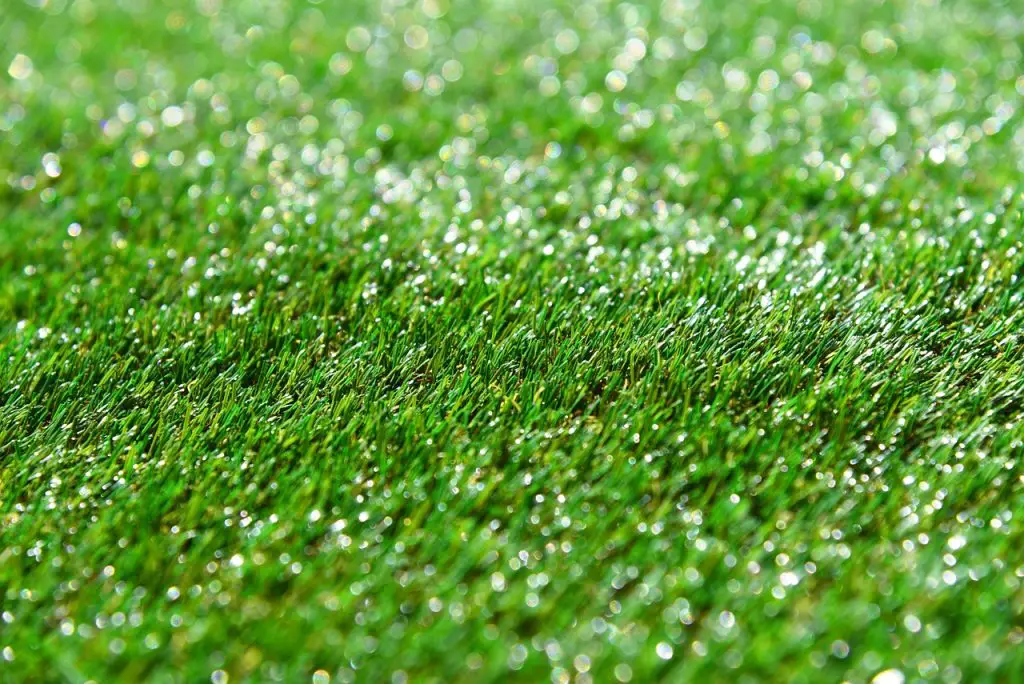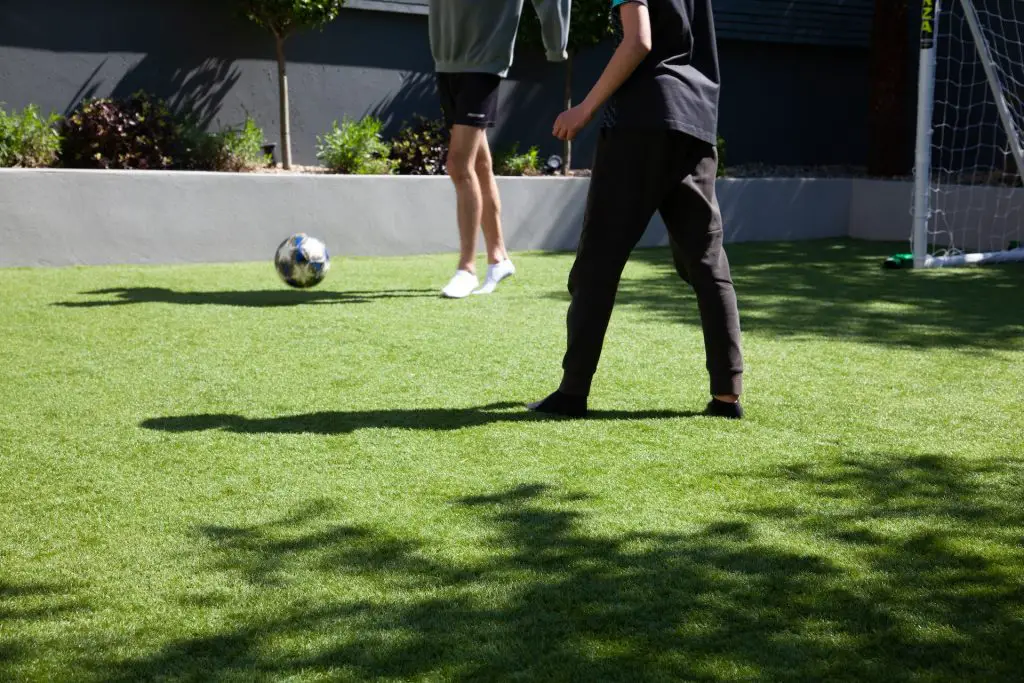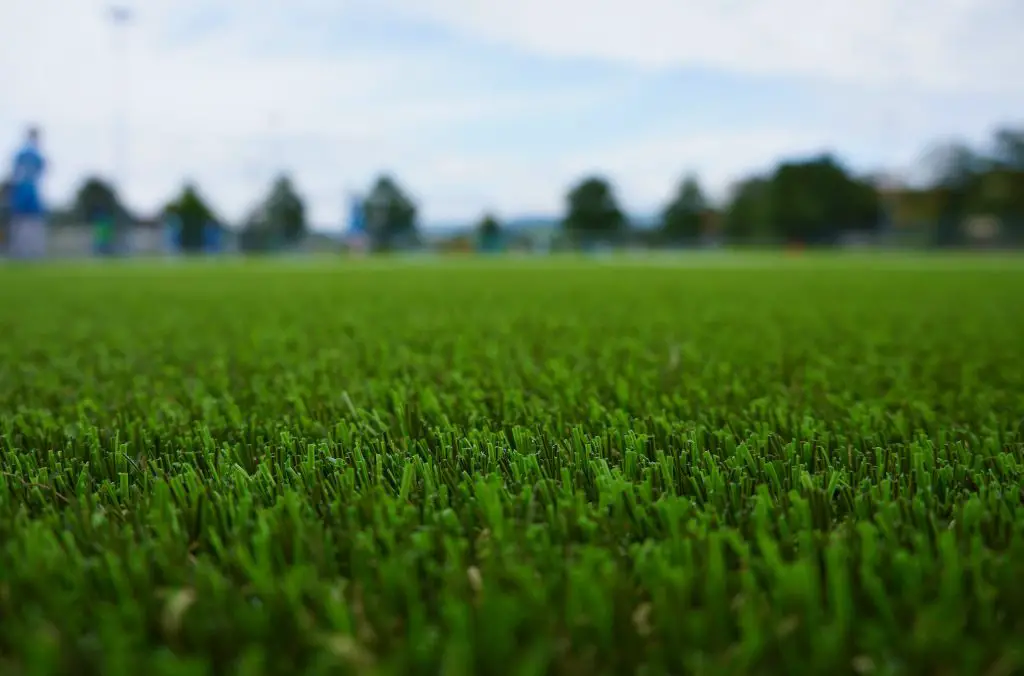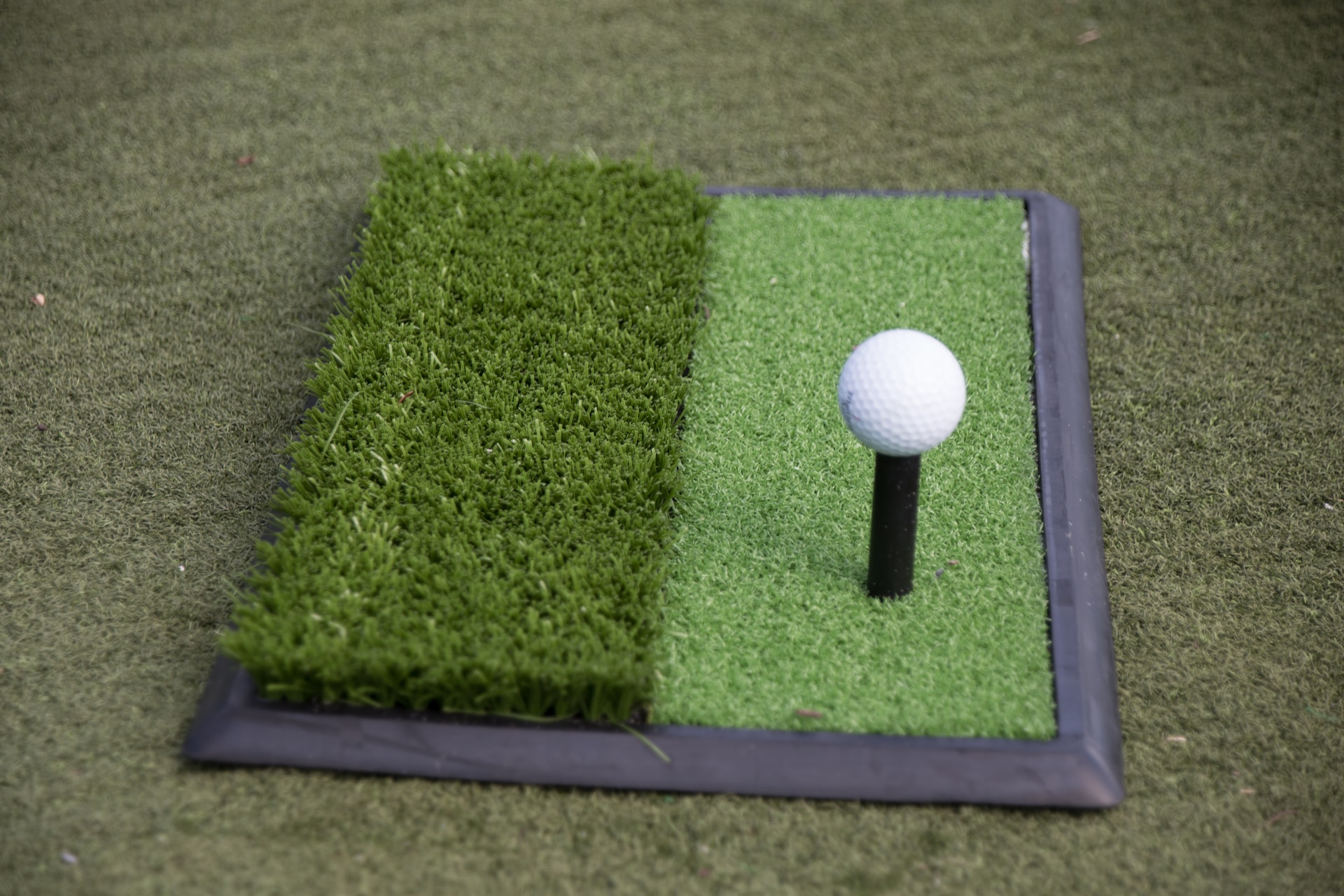Artificial grass is an increasingly popular alternative to natural grass. You may also be considering switching your property to artificial grass. Knowing the pros and cons can give you the confidence to make that choice. This is what those artificial grass pros and cons are.
Artificial grass’s pros are its low, easy maintenance, water conservation, durability, safety, utility, design versatility, and all-weather usability. Its cons include a high initial cost, heat retention, limited lifespan, and potential allergy triggers.
In this content you’ll learn:
A Quick Primer On Artificial Grass

Artificial grass is also known as fake grass, synthetic turf, or astro turf. It is a manufactured alternative to natural grass that mimics the look and feel of real grass.
Artificial grass is made from a combination of synthetic fibers, including nylon, polyethylene, and polypropylene. The artificial blades of grass are bunched together and attached through a backing layer of woven or non-woven material.
By mixing the different types of material, manufacturers alter the texture and color of the artificial grass so it appears as natural grass blades. They usually manufacture artificial grass in rolls, but you can also get it in tiles of various sizes. Professionals install artificial grass in indoor and outdoor areas, such as sports fields, children’s play areas, and landscaping applications.
Artificial Grass Pros

Artificial grass is not just beneficial for sports facilities. It has many advantages over natural grass, making it ideal for residential and commercial properties.
Here’s what they are, starting with its low-maintenance needs.
Artificial Grass Is Low Maintenance
Natural grass requires regular mowing, trimming, and watering to maintain its appearance. This level of maintenance is both time-consuming and physically demanding.
In contrast, artificial grass requires minimal maintenance. This reduction eliminates the need for constant upkeep, ongoing expenses, and resource usage.
You Won’t Have To Deal With Dirt, Mud, Or Grass Stains
Natural grass has its advantages, but not when it comes to dirt, mud, or grass stains. If you want to avoid these, artificial grass is the ideal choice.
You Can Easily Remove Messes And Smells From Artificial Grass
Cleaning is a regular part of grass maintenance, whether your lawn is artificial or natural. Pets, children, and household products can all leave messes on an artificial lawn. Cleaning messes on an artificial lawn is easy with a hose, leaf blower, broom, or mild detergent.
In addition, improvements in artificial grass design make it resistant to animal waste and odors. Many artificial grass products now feature a porous (full of little holes) backing that allows urine to drain into the drainage layer. This design prevents the buildup of unpleasant smells.
Artificial Grass Provides Safe Conditions For Your Children
With artificial grass’s resilient, durable properties and lack of uneven or worn-out areas, the risk of injury to your children is smaller than with natural grass. In addition, unlike real grass, artificial grass does not require chemical pesticides or fertilizers. This further reduces potential health hazards to your children.
Artificial Grass Is Ideal For Difficult Or Unusual Spots
I have found that a lack of sunlight in shady areas often results in my grass withering and dying. So, I recommend using artificial grass for difficult or unusual spots in your outdoor space.
For instance, putting artificial grass underneath trampolines provides a safe and cushioned surface, reducing the chance of injury to children. Using a rubber infill enhances artificial grass’s bounciness.
Steep hills or slopes are also challenging if you use natural grass, as they are difficult to maintain. The grass and dirt underneath will often succumb to erosion as mowers can damage the roots. By opting for artificial grass, you can transform these tricky areas into aesthetically pleasing, low-maintenance spaces. They’ll remain beautifully green all year round with almost no required maintenance.
You Can Mix Artificial Grass With Natural Grass
With the growing range of artificial grass with different patterns and thicknesses, landscapers now have a product compatible with natural grass.
You can create a unique and visually appealing landscape with patches or sections of artificial grass interspersed seamlessly with natural lawns, enjoying both benefits.
You could, for instance, use artificial grass in high-traffic areas or shady spots where natural grass struggles to grow. The combination enhances the overall aesthetic appeal and reduces the maintenance required.
Artificial Grass Decreases Residential Water Usage And Cost
Artificial grass requires far less water than natural grass. This reduces water usage and saves you money on your water bill.
Artificial grass only requires water for occasional cleaning and during hotter conditions. The latter helps keep the artificial grass’s surface temperature down.
The resulting water conservation from artificial grass installations positively impacts local ecosystems, natural habitats, and water-scarce communities, allowing for more efficient water allocation.
It Does The Same For Commercial Properties Too
Whether it is a golf course, sports field, or business park landscaping project, water demand for irrigation is substantial. Transitioning to artificial grass significantly reduces water consumption, contributing to massive water conservation and a more sustainable and responsible approach to landscaping.
Artificial Grass Is Durable
Manufacturers have significantly improved artificial grass since introducing it in the ‘70s. Modern artificial grass now has a lifespan of up to 15 or 20 years, and in some cases, even longer.
Several factors affect artificial grass longevity. The manufacturing process and the artificial grass’s material makeup are the most crucial factors.
High-quality US- and European-made artificial grass lasts the longest, owing to quality control. It may cost more than cheaper Chinese imports, but the enhanced quality will pay for itself in years of trouble-free usage.
Artificial Grass Is Resistant to Ultraviolet (UV) Light
Including ultraviolet light (UV) resistant additives in the fibers and backing manufacture substantially increases artificial grass’s lifespan. This added resistance is especially vital since most artificial lawns are subject to intense and prolonged sun exposure.
It’s Suitable For All Types Of Climates
Artificial grass’s material makeup and durability make it perfect for desert conditions and colder northern climates that experience high rain and snowfall. This versatility is due to its drainage design, sun resistance, temperature resistance, and more.
It Benefits From Versatile Design Options
You have a wide range of artificial grass options to choose from.
You can customize the pile height (length of grass blade), the color, and grass texture. This allows homeowners or designers to match the artificial grass to the look and feel of the surrounding landscape.
An extensive range of shapes and patterns is also available, allowing designers to accommodate unique landscape features.
Whether you wish to install a putting green or a play area, artificial grass can accommodate an almost limitless range of designs.
Artificial Grass Cons (And How To Overcome Them)

Even with all its benefits, artificial grass has its detractors as well. Knowing their worth is vital so you’re prepared to deal with them.
Let’s start with artificial grass’s initial cost.
High Initial Cost
One of the first potential negatives is the high initial cost of installing artificial grass compared to natural grass. The cost of an artificial lawn will depend on the size of the area, the quality of turf required, and any needed customization.
The price for your grass can vary between as little as $5 and as much as $20 per square foot of installed grass. This is in comparison to the 15 to 60 cents per square foot you’ll pay for natural sod.
How To Overcome Artificial Grass’s Initial Cost
The higher initial costs put many people off installing artificial grass. However, consider that cost versus the continuing maintenance cost for natural grass. We recommend discussing this with an experienced contractor. They will help you determine the savings long-term.
Artificial Grass Retains Heat
When compared to natural grass, artificial grass has the potential to retain greater amounts of heat. This is especially true when exposed to direct sunlight or in hot weather.
With increased surface temperatures, there is greater potential for heat-related injuries, such as when walking on them with bare feet. Heat stroke is another concern, especially when using artificial grass for sports fields.
How To Overcome Artificial Grass’s Increased Heat Retention
Lighter-colored grass is an excellent way to mitigate artificial grass’s heat-related issues. This type of artificial grass reduces heat absorption. Regular light watering also helps reduce artificial grass’s surface temperature.
Also, you can incorporate natural or artificial shading, such as trees or man-made structures, into landscaping designs to help reduce the heat further.
Artificial Grass’s Impact On The Environment
Artificial grass, made from man-made materials such as polyethylene, polypropylene, and nylon, raises questions about its non-biodegradable nature and possible environmental impact.
What Manufacturers Are Doing To Help
As a result, manufacturers have developed more eco-friendly options. They have introduced recyclable materials and incorporated biodegradable components into the production process.
They’re also making further efforts toward an even more environmentally friendly end-of-life recycling process.
It Has A Limited Lifespan
The quality of materials, foot traffic levels, and maintenance practices all affect the lifespan of artificial grass. In most cases, artificial grass has a 10 to 20 years lifespan. There are several ways to help it reach the latter end of that spectrum or go even farther.
How To Increase Artificial Grass’s Lifespan
Correct installation is essential after selecting artificial grass suitable for your location and desired use. Proper construction of the base layers, especially the drainage layer, ensures your artificial grass will be free from excess water, which contributes to mold and weed growth.
You’ll also need to brush your artificial grass regularly. Remove debris or messes, including glass. Always use the proper equipment for such a job.
All of the above helps increase artificial grass’s lifespan.
Artificial Grass Can Trigger Allergies
Artificial grass generally poses few health risks, but some people may be allergic to materials used in the grass, such as latex or rubber infill material.
How To Handle Potential Allergies
You’ll want to discuss this with your doctor. Depending on your allergy’s severity, you may opt for natural grass over artificial grass. Ultimately, the choice is yours.
Is Artificial Grass Worth It?
Having spent many years as a player and a coach, I have experienced firsthand the enormous benefits of playing on artificial grass soccer fields. Apart from having artificial fields available all year round, the quality of play and my teams’ enjoyment when playing on a smooth, even surface puts me firmly in the artificial grass supporters camp.
But that’s just one opinion about artificial grass. What’s yours? Has your mind changed after reading all the pros and cons of artificial grass above? Let us know in the comments below!
